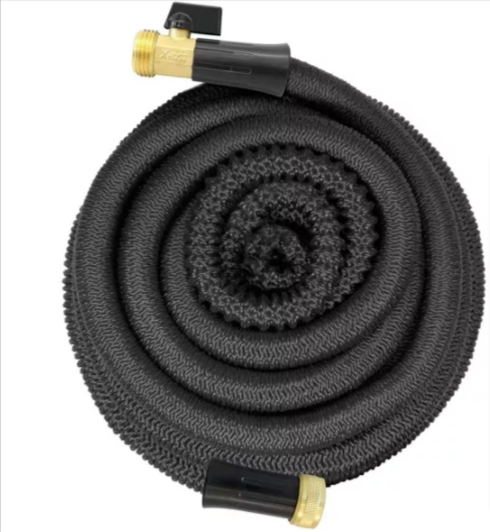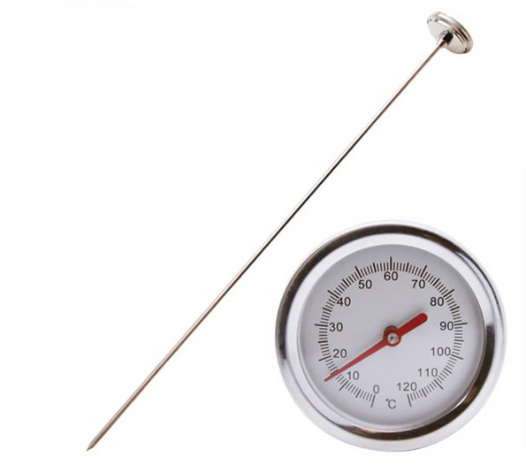We’ve talked about composting before, and I’ve been around composting in one way or another for as long as I can remember. We always had gardens when I was a kid, which meant we had a compost pile – they always went together. I learned a lot more about composting, though, when I took on an after-school job working in the yard and garden in high school.
As of January 1, 2022, California requires its residents to separate organic matter from the rest of the trash. It’s part of California’s pollution reduction strategy to combat climate change, but it’s just good sense for the rest of us too. Since organic waste currently represents about 30-40% of the waste in landfills, diverting and transforming that material into something more beneficial is important. Even diverting one year of food waste by 2030 could prevent 14 million metric tons of carbon emissions.
Even if your state doesn’t have similar organic waste laws, you can do your part to reduce carbon emissions by jumping on the composting train. Composting is really just a natural process of recycling organic material. At its most basic level, you could just throw your waste in a heap and let it decompose, but that’s not as effective as it could be. With a little maintenance and support, you can create compost, also known as “black gold,” to use in your garden, for your houseplants, or for sharing with your friends and family.
Beyond the obvious benefits of reducing methane emissions from landfills and lowering your carbon footprint, I love the fact that I’m able to create enriched soil with all the nutrient-filled material that I would otherwise just be throwing away. That soil is also great for retaining moisture and suppressing pests and diseases. Composting doesn’t take a lot of time, is easy to do, and it doesn’t cost a lot of money. Plus, it’s something my kids can help out with.
What Can You Compost?
I’ve heard some people say: “You can compost ANYTHING.” That’s not quite true, but you can compost a lot of stuff. The most common things you’ll compost are:
-
Fruits and vegetables
-
Eggshells
-
Coffee grounds and filters
-
Tea bags
-
Nutshells
-
Shredded newspaper
-
Cardboard
-
Paper
-
Yard trimmings
-
Grass clippings
-
Houseplants
-
Hay and straw
-
Leaves
-
Sawdust
-
Wood chips
-
Cotton and wool rags
-
Hair and fur
-
Fireplace/fire pit ashes
Of course, there’s a lot of stuff you shouldn’t compost, either. You shouldn’t compost black walnut tree leaves or twigs, because they could be harmful to your plants. Charcoal ash or coal could harm your plants. Avoid composting dairy products – they smell horrible and could attract pests.
Also, if you have disease-ridden plants, don’t compost them, because you could just spread the disease. Avoid lard, grease, fats, oils, and other meat-related scraps and discards. Rodents and other pests love them, which is reason enough to avoid them; but they also smell bad. Similarly, you don’t want to compost soiled cat litter or other pet excrement, which could contain bacteria, parasites, germs, viruses, or other pathogens.
If you use chemical pesticides in your yard, it’s not a good idea to add those yard trimmings to your compostable mix. If you add a bunch of chemicals, you’re defeating part of the purpose of composting by killing off those beneficial fungi and bacteria.
What Do You Need To Get Started?
You can start at the most basic level with your composting. Just start collecting your food scraps and other compostable materials in a little bucket or compost container.
Countertop Compost Bin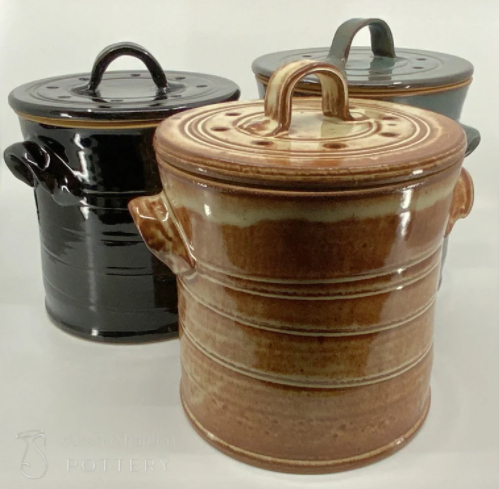
The countertop pottery compost bins don’t do much to stop the odor if you’re tossing smelly kitchen scraps, but they look great on your counter, and they do what they’re supposed to do. They contain the food waste that you produce and are an easy way for you to transport it outside to the compost pile or the outside compost bin.
Worm Farm Composter Box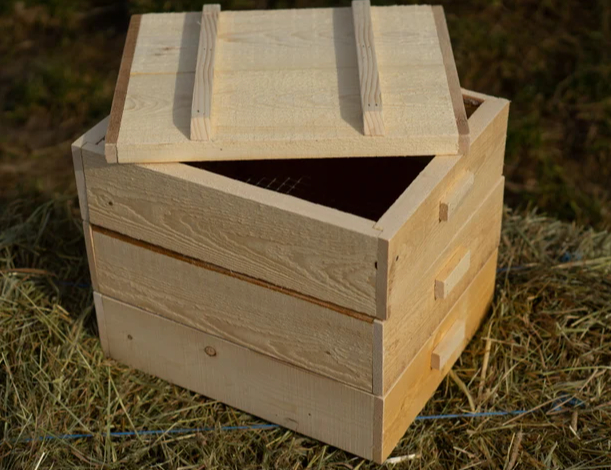
One of my favorite ways to compost is to use worms in my compost box. Our first experience with worms was when my son was in Kindergarten. He even brought his worms to his class to show everyone. I’m not sure how thrilled the teacher was about the whole thing, but he was so proud. Vermi Composters are easy to use, and the worms do a great job!
Tumbler Composter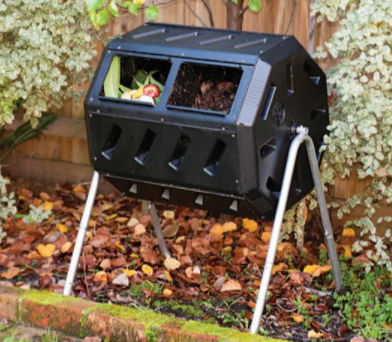
The many variations of compost bins really are the coolest thing in composting. This one may seem like overkill when you first look at it, but when you consider how durable it is, you’ll probably see that this composter really is an investment that will make your life so much easier when you’re composting. It’s easy to load, unload, turn, and maintain. It really does feel a bit like magic.
Gardening Gloves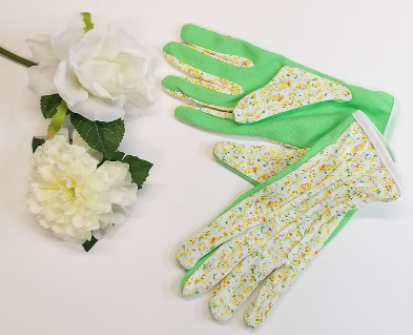
I usually have at least a few different pairs of gardening gloves lying around for different weather/soil conditions and for those instances when my favorite pairs are encrusted with dirt. It’s not strictly essential to wear gardening gloves when you’re working in the garden or working with your compost, but it does keep your hands cleaner. And, since you’re dealing with decomposing yard and kitchen debris, it’s often easier with less of the gross factor.
Garden Hose
You probably already have a hose for your yard and garden work. If you don’t have one already, you should have one handy for your outside compost pile or bin. One of the benefits of composting is that you’re able to infuse more moisture into the soil, but that also means that you need to maintain the right moisture balance to keep your compost healthy.
You don’t want to water it too often, because oversaturation slows down the microbes and chokes the oxygen. The frequency you’ll need to add water will depend on your local climate and conditions as well as the size and type of composter or pile you have. Your compost should have ~ 40-60% water, which you might think of as the feel of an old wrung-out sponge. It’s damp to the touch, but not dripping. (Don’t forget the nozzle!)
Compost Thermometer
Just as you need to keep your compost balanced with the right saturation levels, you also need to maintain the right temperature. The ideal temperature is 150° F. You can usually maintain those temperatures during the majority of your active composting period. There are a number of ways to control and adjust the temperature of your compost, including turning your compost, adding bacteria or nitrogen, adjusting the moisture level, adding more organic materials to the pile, or even moving your compost to the sun.
It’s not so easy to move your compost if it’s in a pile, but many of the compost bins have wheels on them, or you can pick it up and move it between you and another person. It’s also essential that you use a compost thermometer and check the temperature on a regular basis. It might seem like the compost is warm enough, but you really can’t guesstimate accurately.
Pitchfork
Really, you just need anything that will turn the soil. A pitchfork works great for turning compost because it allows you to dig in and turn the debris no matter what is in the pile, whether it’s scraps, straw, or weeds. You have about as many options for pitchforks and transfer shovels as you can imagine. I usually look for the ones that have a sturdy, steel construction and a comfortable handle.
Outdoor Lawn and Garden Cart
 I still hear lots of people recommend wheelbarrows, but utility carts are so much easier! I know wheelbarrows seemed a fun idea when we pushed each other around in them as kids. When I’m trying to get work done, I prefer a utility cart. It allows me to pull more stuff without that additional strain on my back. Plus, it doesn’t tip over all the time. Yeah, I know, you get better at wheelbarrows with use; but why hassle with two wheels when you can have four?
I still hear lots of people recommend wheelbarrows, but utility carts are so much easier! I know wheelbarrows seemed a fun idea when we pushed each other around in them as kids. When I’m trying to get work done, I prefer a utility cart. It allows me to pull more stuff without that additional strain on my back. Plus, it doesn’t tip over all the time. Yeah, I know, you get better at wheelbarrows with use; but why hassle with two wheels when you can have four?
Tips You Should Know For Composting
Now that you know the basics of what composting is and what you need to get started, it may feel a lot less daunting. It’s just like any habit. The more you do it, the easier it becomes. You may also come to realize just how much waste you and your family produce every day AND how much of it can be reused and recycled. Here are a few, quick tips that should help:
-
Don’t let your compost dry out!
-
A bigger compost pile is often better.
-
Avoid putting too much of any one thing in your compost pile.
-
Don’t soak your compost.
-
Keep your compost aerated. It needs oxygen, too!
The most important tip is to have fun with it. It doesn’t have to be a chore! You can think of it as a recipe for success: one part greens (garden trimmings and kitchen scraps) for energy, with two-to-three parts brown (straw, paper, and woody materials) for bulk. Then add air throughout the process. Add moisture, but protect it from soggy-rainy conditions. You’re creating something nutritious and healthy while supporting the rest of your garden and plants.

Do you compost? We’d love to hear more about your experience? Comment below!
For Gardening Articles, Read These Next:

